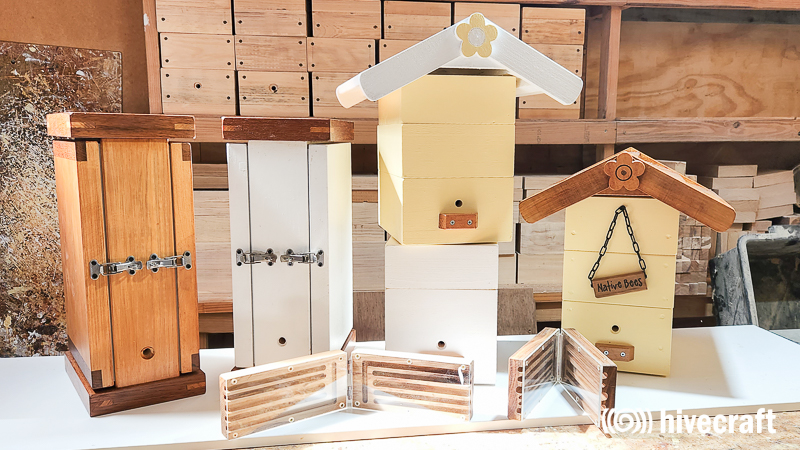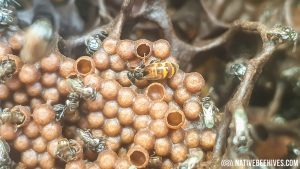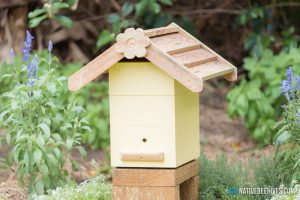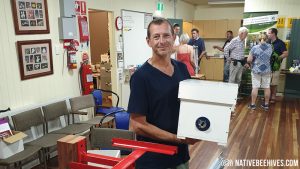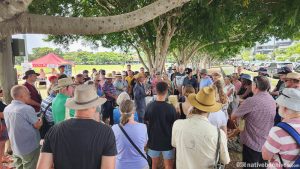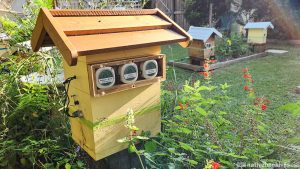Katja Hogendoorn and Brian Cutting dropped in to check out David Anderson’s elaborate solitary bee habitat. Dr Katja Hogendoorn has done a lot of work with Carpenter Bees and is assisting Brian with his latest pollination research.
Brian is gathering Blue Banded Bees and nests for further research with pollination of certain crops inside green houses. Research has been done using Carpenter Bees in the past, and while they’re great pollinators, Katja says certain behaviours or life cycle aspects meant they haven’t been suitable so far and hopes for a better result with Blue Banded Bees. Brian and Katja are working to build suitable nesting structures that are able to provide sufficient numbers of bees for pollination inside the trial green houses. They have a number of challenges creating and sustaining a good population of bees including providing a sufficient supply of nectar.
Brian took away a few of David’s blocks which should have bees inside and placed empty blocks and which will hopefully attract more bees in the coming season.
- Dr Katja Hogendoorn – University Research Fellow at the University of Adelaide
- Brian Cutting – Entomologist – Research Associate at The New Zealand Institute for Plant & Food Research Ltd.
- David Anderson – Northside Native Bees
Photos show a few Blue Banded Bee dirt blocks and also bamboo and wood blocks for other solitary bees.








Quote from David Anderson – Northside Native Bees
Further to yesterday’s post, Dr Katja Hogendoorn and Brian Cutting were able to take a peek at one of the Blue Banded bee nests I gave them to find five living pupae and pre-pupae. Based on the eye colour, they expect to have adult Blue Banded Bees emerging within about 2 weeks.
These nests will go into a greenhouse at the Samford Ecology Research Facility to learn more about pollination of greenhouse crops and providing nest space for a continuous population of Blue Banded bees in greenhouse environments.
Yesterday I learnt lots, and some of these are:
- Blue Banded Bees use nectar to soften the clay as they dig their nest. This results in small clumps forming in the material that is ejected from the hole as they dig; another means of identifying their nests.
- Tomatoes (the crop under investigation) do not provide nectar, so the bees will also be provided with some other flowers as well as sugar water feeders, which is quite capable of sustaining them.
- After some years of reusing nests, chalkbrood fungus can start to become present, and at this point the bees will look for alternative nest sites. So, providing new nest blocks and disposing the old ones is something to keep in mind with your bee motels at home.
Below photos supplied by Katja and Brian



Below: David Anderson with the large bee hotel. This is made up of bamboo, drilled wood blocks, paper straws and compacted dirt with pre drilled holes.


